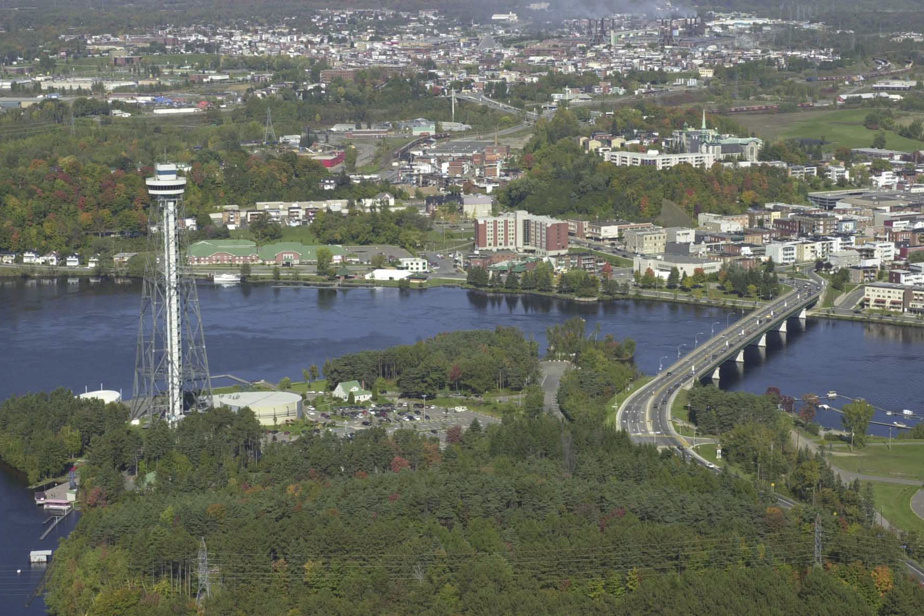TES Canada will have to build the equivalent of 35 kilometers of transmission line so that the park of 140 wind turbines it is planning in Mauricie can supply its green hydrogen and synthetic gas complex in Shawinigan.
Given that the Mauricie Project, estimated at $4 billion, is subject to review by the Bureau d’audiences publique sur l’environnement (BAPE), the promoter recently filed its project notice with the Ministry of the Environment, Fight against climate change, Wildlife and Parks.
Prepared by the engineering firm AtkinsRéalis – formerly SNC-Lavalin – the 44-page document paints a portrait of the technical elements presented last November by TES Canada. This report also clarifies some of the company’s intentions.
“Two 230 kilovolt or 315 kilovolt voltage lines with a cumulative length of approximately 25 to 35 km will be built to connect the wind farm to the factory site,” we can read. Two transformation stations […] are also planned to meet the needs of the project. »
This element will therefore be added to the visual bill of the 800 megawatt (MW) wind farm which must be combined with a 200 MW solar park. However, the wind turbines must be connected to each other by an underground collector network. TES Canada also obtained a 150 MW block from Hydro-Québec, approximately 30 times the power of the Bell Centre.
“We don’t say how many [d’ententes ont été signées]but we have more than we need for wind turbines, explained the president and CEO of TES Canada, Éric Gauthier, in a recent interview with The Press. The location of each wind turbine has not yet been determined. »
The promoter wants to produce 70,000 tonnes of green hydrogen in Shawinigan, two-thirds of which would be injected in the form of synthetic gas into the Énergir network to supply heavy industry, such as aluminum smelters and steelworks. The rest (30,000 tonnes) would be intended to operate 2,000 heavy trucks on the roads of Quebec.
TES Canada also wants to re-inject its energy surpluses into the Hydro-Québec network – which constitutes a breach in the state-owned company’s monopoly, according to environmental groups.
Larger land
We learn, in the document, that TES Canada ultimately targeted 13 municipalities that could host its wind turbines. This is one more than what was previously indicated. Grandes-Piles is added to the list. In a statement, the company specifies that this is an “effort to minimize the impact on agricultural land since the targeted sector” of Grandes-Piles “is zoned agroforestry and industrial”.
The document addresses the economic, environmental and social aspects of the Mauricie Project. The proponent places particular emphasis on the benefits and spinoffs for the region.
“In addition to the benefits associated with royalties paid to owners receiving a wind turbine, to municipalities and certain [résidants] considered neighbors, the Mauricie Project will allow the creation of more than 200 permanent jobs to ensure the operation and maintenance of the installations,” it is written.
Overall, the project study area covers more than 1,300 square kilometers. Wetlands occupy approximately 10% of the surface area, according to the project notice.
Shawinigan must accommodate the industrial portion of the site, namely the electrolyzer. Two sites have been identified by TES Canada. The first, of 83 hectares, is located along Route 155, at the corner of Avenue Saint-Georges. The second covers 170 hectares and runs along part of Highway 50 and Route 153.
The TES Canada project raises several questions. Earlier this month, a study considered the file to be an energy aberration and economic nonsense. Written by researchers Johanne Whitmore and Paul Martin, chemical engineer and co-founder of Hydrogen Science Coalition, the document paints a portrait of the file based on information made available by its promoters. TES Canada counters that the authors draw conclusions based on an incomplete picture.
Read “TES Canada project harshly criticized”
What is green hydrogen?
Currently, 95% of the world’s hydrogen is produced from fossil fuels. Hydrogen can be produced by the electrolysis of water. This process involves passing an electric current through water.
Learn more
-
- 2026
- Year TES Canada believes it can begin construction of the project
source: TES CANADA
